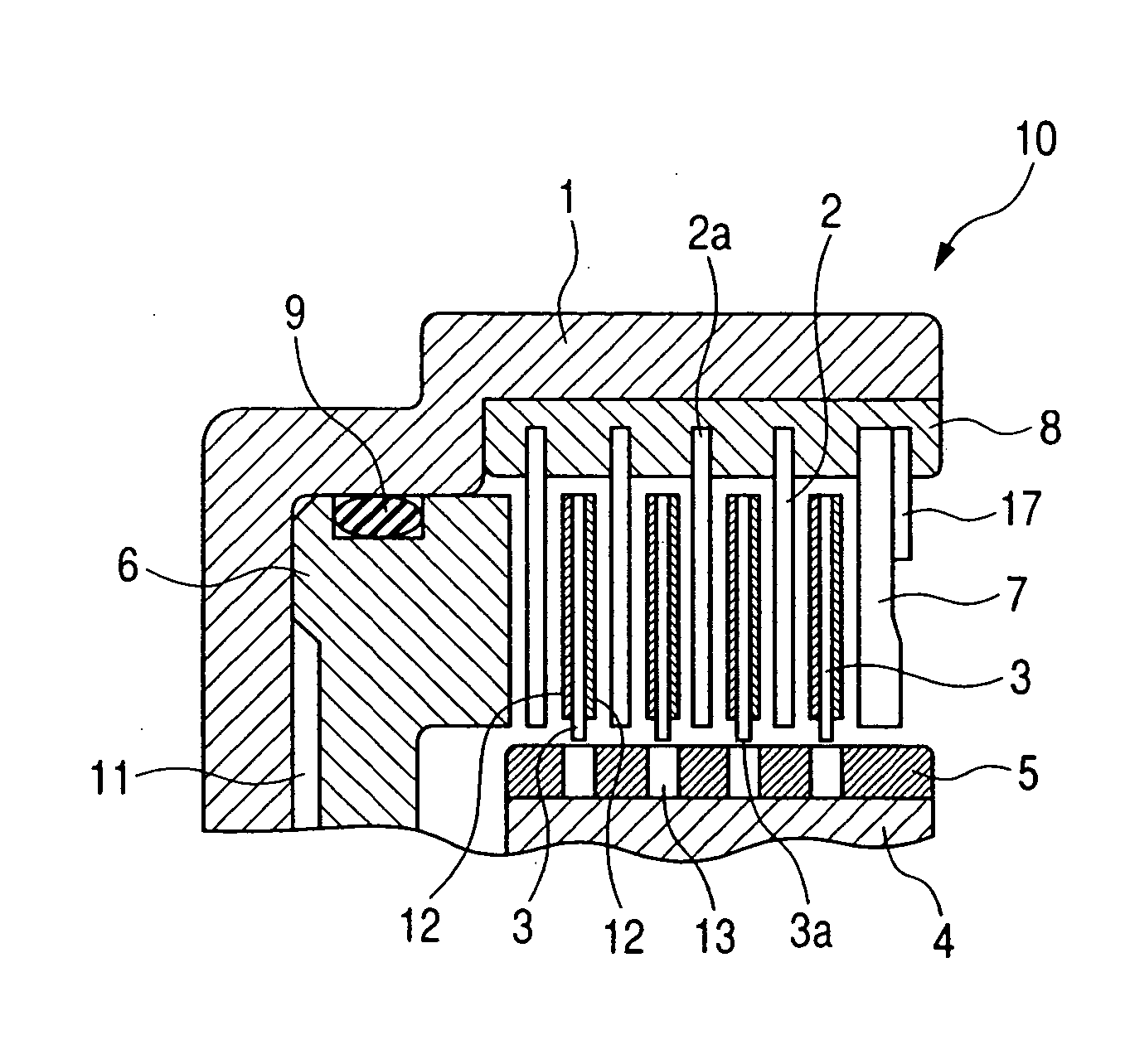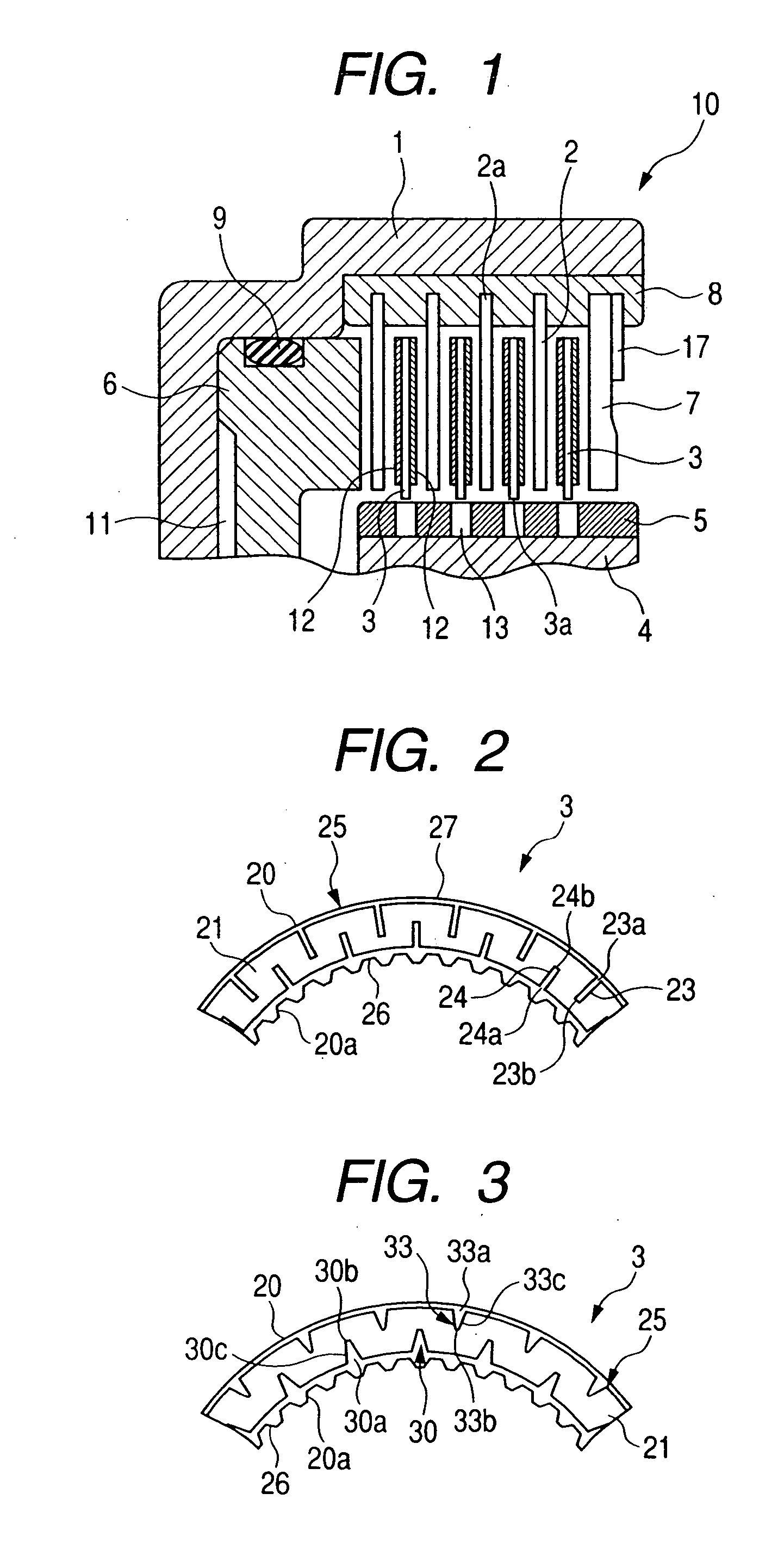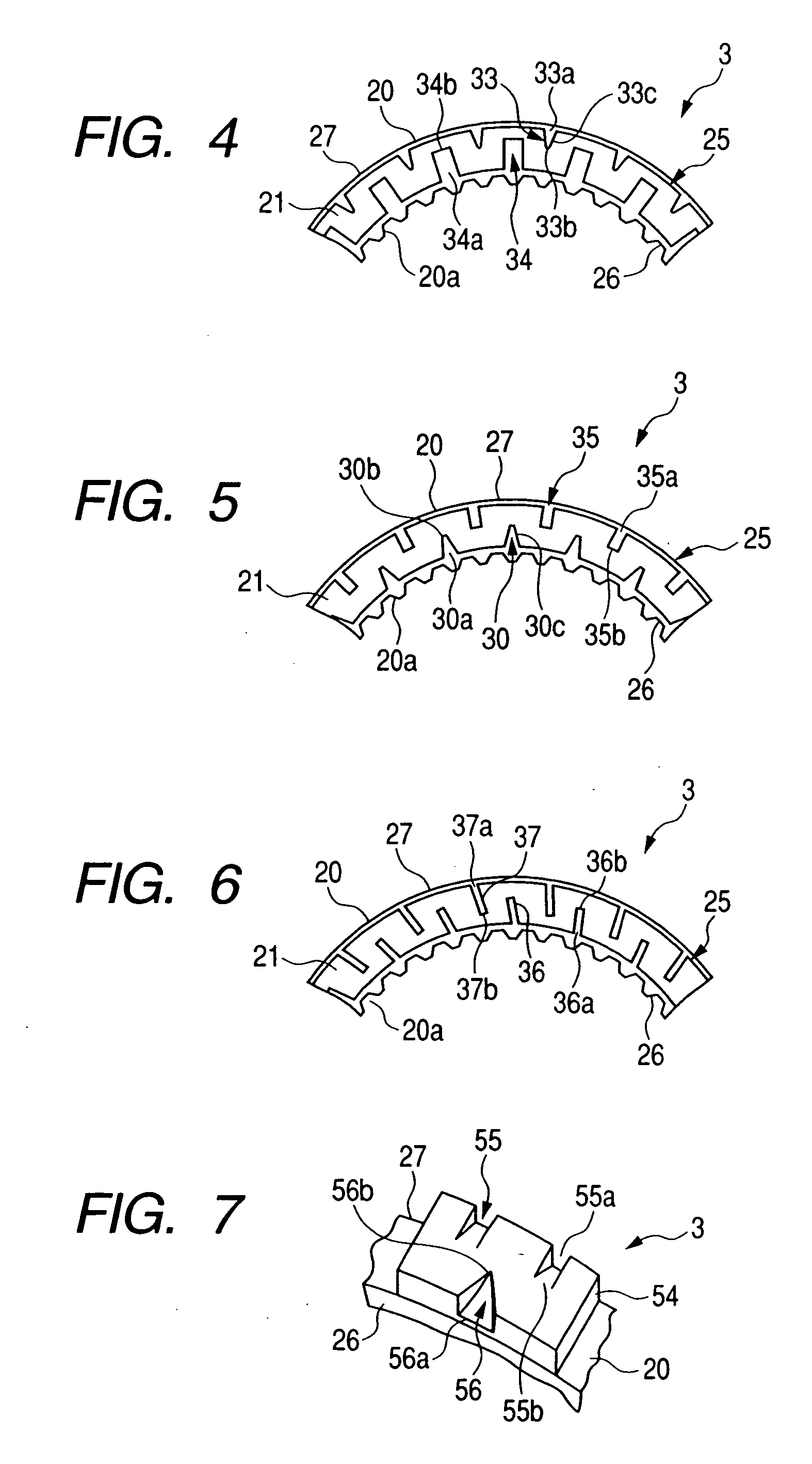Friction plate and wet-type multi-plate clutch having such friction plate
a multi-plate clutch and friction plate technology, which is applied in the direction of fluid-actuated clutches, clutches, non-mechanical actuated clutches, etc., can solve the problems of increasing the drag torque, and the request for further reducing the drag torque cannot be satisfied, so as to stabilize the quality, reduce the drag torque during idle rotation, and reduce the effect of shock upon the engagemen
- Summary
- Abstract
- Description
- Claims
- Application Information
AI Technical Summary
Benefits of technology
Problems solved by technology
Method used
Image
Examples
first embodiment
[0036]FIG. 2 is a partial front view of a friction plate 3, showing a first embodiment of the present invention. The friction plate 3 has a friction surface 25 formed by sticking or adhering an annular friction material 21 to a substantially annular core plate 20. The core plate 20 is provided at its inner periphery with splines 20a engaged by the splines 5 of the hub 4.
[0037] As shown, the annular friction material 21 is provided with first oil grooves 24 each having an opening portion 24a opened to an inner peripheral edge 26 of the friction plate 3 and an end portion 24b terminating at a point between the inner peripheral edge and an outer peripheral edge, and second oil grooves 23 each having an opening portion 23a opened to the outer peripheral edge 27 of the friction plate 3 and an end portion 23b terminating at a point between the inner and outer peripheral edges. The first oil grooves 24 and the second oil grooves 23 are alternately arranged along a circumferential directio...
second embodiment
[0040]FIG. 3 is a partial front view of the friction plate 3, showing a second embodiment of the present invention. A fundamental construction of the second embodiment is the same as that of the first embodiment. Accordingly, only differences will be described. This is also true with respect to third, fourth and fifth embodiments which will be described later.
[0041] In the second embodiment, each of first oil grooves 30 each having an opening portion 30a opened to the inner peripheral edge 26 of the friction plate 3 and an end portion 30b terminating at a point between the inner and outer peripheral edges and each of second oil grooves 33 each having an opening portion opened to the outer peripheral edge 27 and an end portion terminating at a point between the inner and outer peripheral edges has a tapered configuration.
[0042] As shown, each first oil groove 30 has tapered portions 30c extending from both circumferential ends of the opening portion 30a to the end portion 30b. Acco...
third embodiment
[0045]FIG. 4 is a partial front view of a friction plate 3, showing a third embodiment of the present invention. A fundamental construction of the third embodiment is the same as that of the second embodiment. Accordingly, only a difference will be described.
[0046] The third embodiment is an alteration of the second embodiment. In this third embodiment, a configuration of a first oil groove differs from that of the second embodiment. A first oil groove 34 has generally a rectangular configuration and includes an opening portion 34a opened to the inner peripheral edge 26 of the friction plate 3 and an end portion 34b terminating at a point between the inner and outer peripheral edges, and a circumferential width of the opening portion 34a is substantially the same as that of the end portion 34b. Further, similar to the first embodiment, the first oil grooves 34 and the second oil grooves 33 are alternately arranged along a circumferential direction substantially equidistantly.
PUM
 Login to View More
Login to View More Abstract
Description
Claims
Application Information
 Login to View More
Login to View More - R&D
- Intellectual Property
- Life Sciences
- Materials
- Tech Scout
- Unparalleled Data Quality
- Higher Quality Content
- 60% Fewer Hallucinations
Browse by: Latest US Patents, China's latest patents, Technical Efficacy Thesaurus, Application Domain, Technology Topic, Popular Technical Reports.
© 2025 PatSnap. All rights reserved.Legal|Privacy policy|Modern Slavery Act Transparency Statement|Sitemap|About US| Contact US: help@patsnap.com



